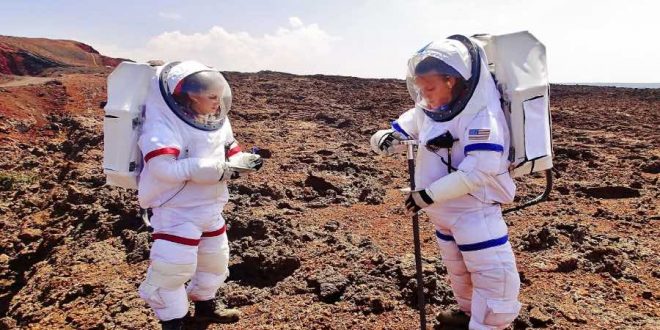After eight months of living in isolation on a remote Hawaii volcano, six NASA-backed research subjects will emerge from their Mars-like habitat on Sunday and return to civilization.
The experiment was specially designed to replicate conditions on Mars, and to test the social and psychological effects a real manned mission to the red planet would pose to humans.
The research subjects, two men and four women, were cooped up in a small 1,200 square-foot (111-square meter) dome, except for excursions to explore the simulated Martian landscape.
Throughout the mission, crew members had to follow protocols simulating their life on Earth’s closest planetary neighbor, including eating “shelf-stable” food fit for space travel and donning astronaut suits when leaving their living quarters.
All communications to the team were subject to a 20-minute delay, the time it would take messages to travel from Earth to Mars.
Crew members wore sensors to gauge their moods and proximity to others. Among the sensor’s functions was monitoring the crew’s voice levels and detecting whether people were avoiding one another.
This is the fifth such mission undertaken by the Hawaii Space Exploration Analog and Simulation (HI-SEAS), based at the University of Hawaii. NASA has earmarked roughly $2.5 million for studies at the facility.
Agencies/Canadajournal
 Canada Journal – News of the World Articles and videos to bring you the biggest Canadian news stories from across the country every day
Canada Journal – News of the World Articles and videos to bring you the biggest Canadian news stories from across the country every day



